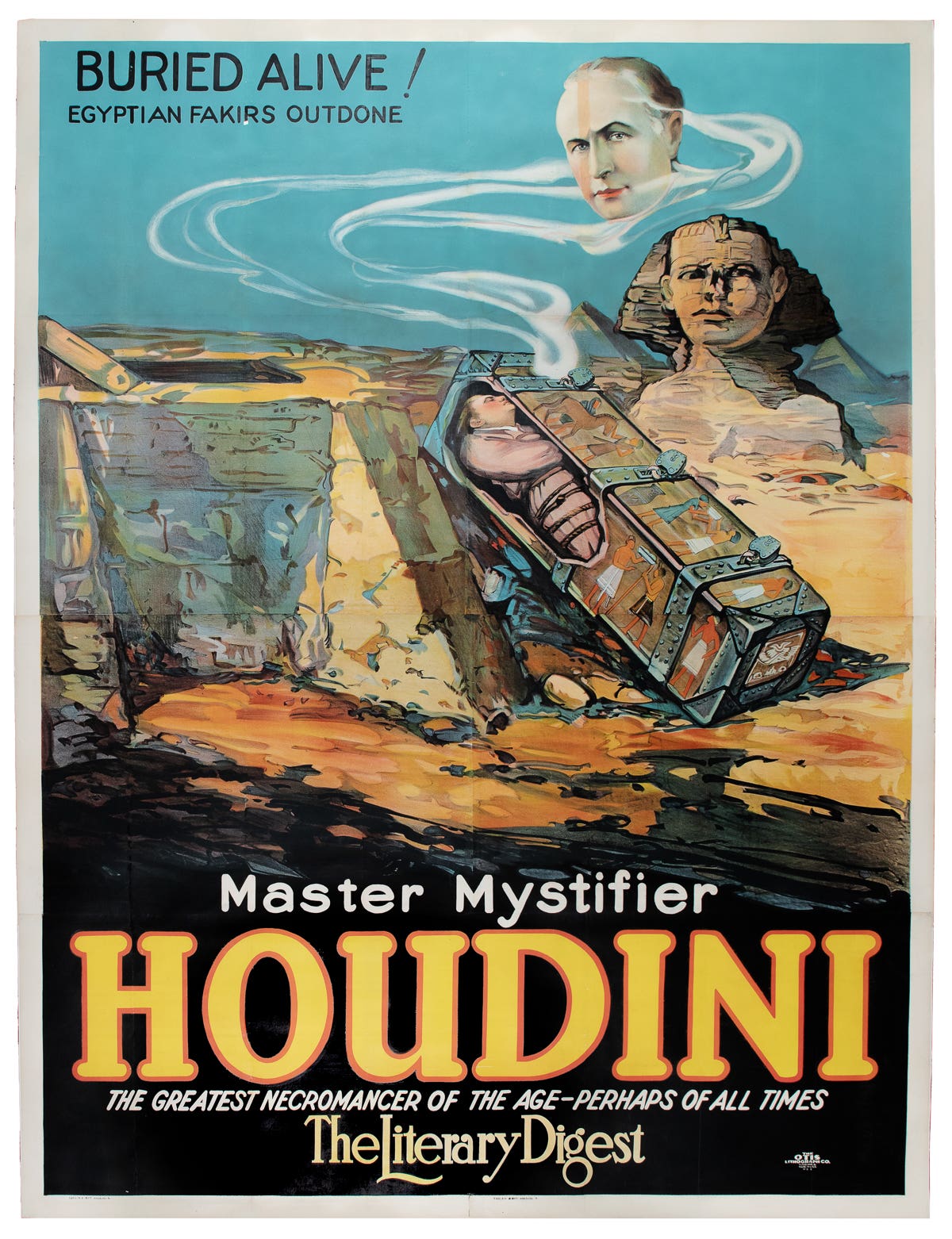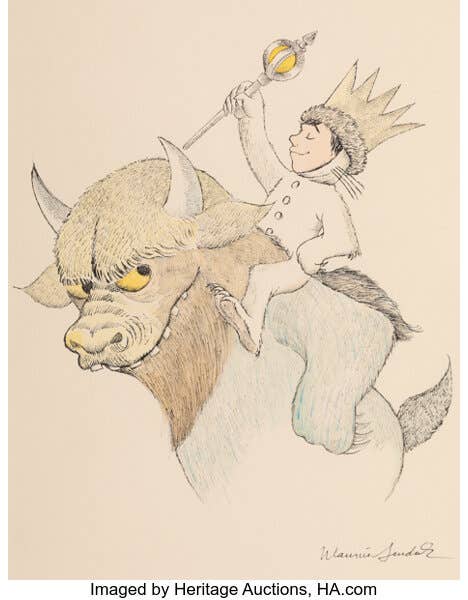Dwight Cleveland’s Movie Poster Collection Stars as Largest in The World
Just in time for the Academy Awards, meet Dwight Cleveland who was first intrigued by movie posters in high school. Now, more than 40 years and 45,000 posters later, his remarkable collection dazzles in a book that spans a century of film history.
For a guy who got things backwards, Dwight Cleveland has done pretty well for himself.
A Chicago real estate developer and historic preservationist, Cleveland has been collecting movie posters for more than 40 years, assembling what many consider the largest privately held and fully curated film poster archives in history.
The thing is, he’s not really a movie buff. “I fell in love with the artwork on the posters first,” Cleveland explains. “I was drawn into the hobby by the graphics of the early posters and only later learned to love the movies.”
At one point, his collection topped 45,000 items, all stored in a temperature-controlled art warehouse. After several donations to the Academy of Motion Pictures Arts & Sciences, the Library of Congress and other important institutions, Cleveland has pared down his personal archives to around 4,500 posters, lobby cards and “coming attraction” glass slides spanning more than a century of film history.
Some of the finest examples of Cleveland’s collection are showcased in Cinema on Paper: The Graphic Genius of Movie Posters (Assouline Publishing, $95), a remarkable and impressively visual celebration of movie posters and the films they publicize.
In the book’s Foreword, Ben Mankiewicz, the highly respected Turner Classic Movies primetime host and grandson of Citizen Kane screenwriter Joseph Mankiewicz, says “movie posters represent what is perhaps the purest collision of art and commerce … they are imbued with optimism and filled with the escapist thrill of what we imagine the screen holds in store for us: romance, adventure, laughter, betrayal, tragedy, justice, redemption, truth.”
Cleveland goes to great lengths throughout Cinema on Paper to explain the wonder he finds in each poster. His writing is insightful and lively, reflecting an unbridled appreciation and joy for his subject. For the movie poster for 1933’s Footlight Parade, Cleveland writes:
“In the early 1930s, Warner Brothers thumbed its nose at the Great Depression with a trilogy of the most lively, irreverent, and deliciously Pre-Code musicals one could imagine, all of which – the others being 42nd Street and Gold Diggers of 1933 – remain fan and critical favorites.
“Footlight Parade’s delights were no secret to filmgoers, who were lured into the theater by the rather astounding portrait of exaggerated and suspiciously effete James Cagney and Dick Powell paired with (for all intents and purposes) fully nude Ruby Keeler and Joan Blondell.
“Not only is this one of the most revealing designs from the golden age of Hollywood, it also possesses a wonderful Art Deco aesthetic typical of Warner Brothers’ early 1930s campaign.”
Before attending business school in 1985, Cleveland purchased a round-the-world airline ticket on TWA. He spent nine months skiing the steepest slopes, fly-fishing spring-fed rivers, scuba-diving spectacular reefs and hunting down that most elusive of art forms: the vintage film poster.
“It has been a wild ride,” says Cleveland, who was first inspired by the poster collection of a high school teacher. “The stories and individuals I’ve met and befriended the world over these past four decades are now the treasures beyond the collection itself.”
The following are some of Cleveland's favorite movie posters as well as his thoughts on what makes the posters so compelling.
The Girl From 10th Avenue (1935): During the height of Depression-era New York, the difference between a Fifth Avenue and a Tenth Avenue street address was a chasm almost too wide to fathom. Yet this division, and a somewhat implausible narrative, produced this ravishing title card, yet another example of Warner Brothers’ early 1930s Art Deco designs. Here, Bette Davis’ elegance is deceptive, as her character is a poor working girl who ends up serendipitously married to a society lawyer, on a bender after receiving the boot from his fiancée. The lawyer’s ex-showgirl housekeeper volunteers to “dress up” Miss Davis enough to hang on to her man. The actress was about to receive her first Oscar, bringing her much-earned respect.
Moon Over Miami (1941): Prior to his notable work for Esquire magazine, legendary glamour-girl illustrator Alberto Vargas found commissions where he could glamorize “the most beautiful girls in the world,” first for Florenz Siegfeld, then for various magazine covers and occasional film publicity. Though hired by Fox to create the entire campaign for the Betty Grable musical film Moon Over Miami, less than a handful of posters ended up with his work unadulterated, with this insert poster best encapsulating Vargas’s air-brushed, streamlined interpretation of Grable’s assets.
Hang ‘Em High (1968): This is Clint Eastwood’s first big Hollywood film, following his overnight success from the Sergio Leone spaghetti western trilogy. It clearly shares much in style and sentiment with those films, as depicted in this wonderfully gritty Herman Kurz design of the actor in full “Man with No Name” trappings. Hang ‘Em High, a relatively quiet, tough little western, reintroduced Eastwood and his revisionist-cowboy heroic qualities to American audiences.
Barbarella (1968): “Barbarella, psychedela, there’s a kind of cockleshell about you . . .” So goes the theme song to an iconic film of the psychedelic era, starring none other than Hollywood royalty turned starlet, turned Vietnam war protester, turned workout guru, Jane Fonda. Her final Roger Vadim film – the only one to achieve immortal cult status – boldly celebrated the freedoms following the end of the Production Code, including a zero-gravity strip tease and sex with aliens, with another woman, with a machine – and the list goes on. This Japanese 1-sheet successfully captures this cultural time capsule.
City of Women (1980) Italian: For City of Women, Federico Fellini’s sequel of sorts to his 1963 autobiographical classic 8 1/2, Italian cult comic artist Andrea Pazienza – whose professed influences were Italian Renaissance paintings, American underground comics, and psychedelic drugs – conjured this fantasy of glorious, heavenly womanhood.
Sunset Boulevard (1950) Polish: In this spot-on design, Waldemar Swierzy, Poland’s supreme master of film poster art, has turned Gloria Swanson’s silent-screen star Norma Desmond, well past her “best by” date, into a snake-headed Medusa. Her classic, hyper dramatic pose is rendered by Swierzy directly from the film’s conclusion, in which the delusional actress descends the staircase for the cameras to the coaching of Erich von Stroheim, believing that Cecil B. DeMille is directing her close-up. Just as the Medusa of myth had the power to freeze viewers into stone, so, too, does Swierzy’s fantastic tribute to Swanson have the same effect – stopping viewers dead in their tracks.
You May Also Like:
Paul Kennedy is Editorial Director of the Collectibles Group at AIM Media. He enjoys Mid-century design, photography, vintage movie posters and people with a good story to share. Kennedy has more than twenty-five years of experience in the antiques and collectibles field, including book publishing. Reach him at PKennedy@aimmedia.com.








